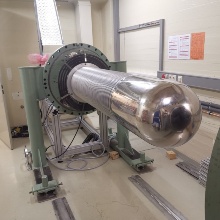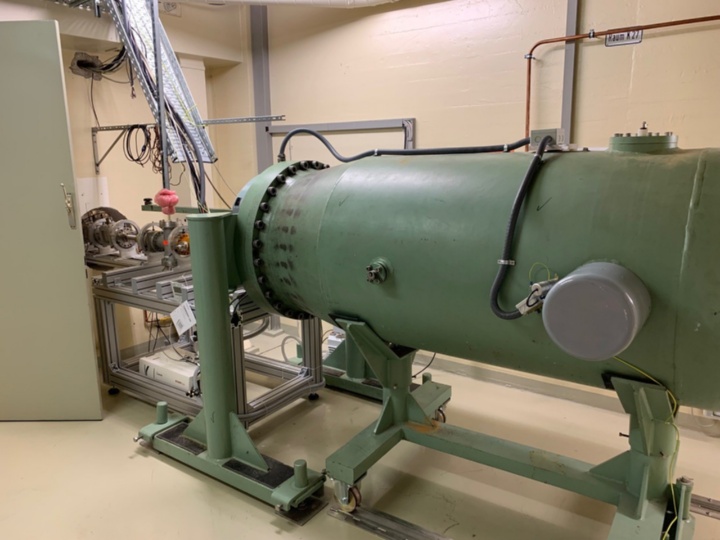DESTINY+ and DDA - building bridges between planetary science and astrophysics
In 2024, the Japanese-German space mission DESTINY+, organized by the German Aerospace Center (DLR) and JAXA (Japan Aerospace Exploration Agency), will launch on a journey to the asteroid 3200 Phaethon; on board is the dust analyzer DDA (Destiny Dust Analyzer) belonging to the Institute for Aerospace Systems
DESTINY+ stands for "Demonstration and Experiment of Space Technology for INterplanetary voYage" and is, following the great success of the NASA/ESA Cassini-Huygens mission, the next big step for dust astronomers at the University of Stuttgart's Institute of Space Systems (IRS). "The dust analyzer on DESTINY+ is a more advanced version of the successful CDA dust analyzer on NASA's Cassini-Huygens spacecraft and opens a new window in the field of dust astronomy", explains the director of the institute, Dr. Ralf Srama.
No flight without dust accelerator
The commissioning of the world's most advanced dust accelerator at the IRS in January 2022 is an important milestone for the mission. The facility was build together with the Materials Testing Institut (MPA) and will be used for testing dust sensors for interplanetary space missions such as DESTINY+ , and will be continuously developed and optimized. In the dust accelerator laboratory, the space experiments are tested and calibrated in advance and the dust measuring instruments are calibrated so that they function on board interplanetary space probes. In the new dust accelerator, 100 nm metal or silicate particles can be accelerated in a vacuum tube to particle velocities of 50 km/s. Such high relative velocities are particularly likely to occur when measuring interstellar dust with space probes in the solar system.
It will take DESTINY+ four years to reach the asteroid 3200 Phaethon. One of the main goals of the mission is to characterize Phaethon at a solar distance of 150 million kilometers whilst conducting a flyby at a speed of 36 km/s.
"Conducting a flyby past the asteroid Phaethon will allow the precise analysis of individual nanoparticles for the first time, enabling us to draw conclusions about the surface composition of this body," explains Ralf Srama. In the process, the probe will approach the asteroid, remaining at a distance of 500 km. Remote sensing and in-situ observations are planned throughout the flight. Japanese multispectral cameras will analyze the 6 km asteroid from a distance, and the dust sensor will determine the masses, electrical charge, and composition of dust particles originating from Phaethon.
Phaethon, which is only about 21 million kilometers from the sun during certain phases of its orbit, is considered the origin of the Geminids, a dust cloud orbiting the sun that provides a shower of shooting stars for us every December. Due to its proximity to the sun, the surface of the 6 km-wide body heats up to a temperature of more than 700 degrees Celsius, releasing dust particles and a lot of gas. Because Phaethon has already lost a lot of surface material and only shows activity when it orbits close to the sun, it is called an active asteroid.
In particular, DDA's scientific measurements include chemical analyses of the composition of interplanetary and interstellar micrometeoroids in the inner solar system. According to Ralf Srama, these findings should shed light on the formation and evolution of our solar system and thus answer fundamental questions relating to astrobiology: "We expect detailed data from dust particles and their interplanetary and interstellar sources. Never before have analyses been achieved in space using a dust telescope of this quality."
The dust spectrometer enables chemical analyses of organic components of individual cosmic dust particles. Using sensitive instruments, carbon can be detected as the main component so that the cosmic transport of organic substances by dust particles to Earth can be studied using DESTINY+ . The dust telescope DDA on board the Japanese spacecraft was developed by the IRS in collaboration with the company von Hoerner & Sulger and funded by DLR Space Management with funds from the German Federal Ministry for Economic Affairs and Energy (BMWi). JAXA is responsible for the development, construction and launch of the spacecraft, as well as the subsequent operation of the mission. In the future, DLR and JAXA will work together on the Mars Moon Explorer (MMX) mission to explore Mars' moons Phobos and Deimos, among other projects. Germany and Japan also make intensive use of the International Space Station (ISS) to answer questions relating to medicine, materials development and basic research.
Further information:
DESTINY+: Germany and Japan begin new asteroid mission - DLR portal [de]



